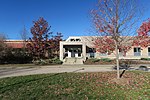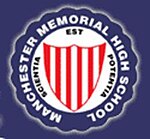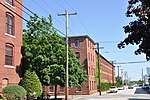Cohas Brook
Cohas Brook is a 16.5-mile-long (26.6 km) river located in southern New Hampshire in the United States. It is a tributary of the Merrimack River, part of the Gulf of Maine watershed. Cohas Brook rises in Auburn, New Hampshire, north of Calef Pond. The brook follows a winding course westward to the Merrimack River in Manchester. In Manchester it picks up the outlet of Massabesic Lake, the water supply for the city. This lower portion was formerly known as the "Coos River".Much of the brook's course is quite close to intense suburban development, including Interstate routes 93 and 293, the South Willow Street commercial corridor, and Manchester–Boston Regional Airport.
Excerpt from the Wikipedia article Cohas Brook (License: CC BY-SA 3.0, Authors).Cohas Brook
Brown Avenue, Manchester
Geographical coordinates (GPS) Address Nearby Places Show on map
Geographical coordinates (GPS)
| Latitude | Longitude |
|---|---|
| N 42.931666666667 ° | E -71.454166666667 ° |
Address
Brown Avenue 3020
03103 Manchester
New Hampshire, United States
Open on Google Maps








